#the-megalosaurus
Explore tagged Tumblr posts
Text

"What is to come"
(image id is both in the alt text and below the read more- I put it under one because it's incredibly long)
And so there we have it, the 200+ followers artpiece that I have been working on for several days, if I had to guess I'd say it took 25 or so hours over eleven days. Honestly it's so surreal to me that I'm here with over 200 followers (260 as of typing this- yes, I procrastinated on this), especially when I only hit 100 followers in February. It's genuinely really nice to know that people are actually interested in my art (before anyone brings up spam bots- I know there are a few of them amongst my followers but I've checked most of them and I am 100% confident that over 200 of them are real). I don't really have much else to say really- I'm just grateful to have the support. Thanks y'all :).
[Image id: a large, lineless digital drawing of several dinosaurs. It is nighttime. At the bottom of the piece, a lone Eoraptor lunensis is walking across the floodplains- both the ground and the Eoraptor are just silhouettes, the early dinosaur has been given protofeathers. The full moon is shining, it's size is exaggerated for artistic affect. Behind the moon, the heads of sixteen different dinosaurs can be seen (listed left to right, bottom to top) Row 1- Thecodontosaurus antiquus (small sauropodomorph with light brown protofeathers, near-white undersides, straight stripes that are moderately darker than the base colour and vibrant green eyes), Coelophysis bauri (small early theropod with a long and narrow skull, its protofeathers are golden and black. A soft orange stripe runs across the back of its head, it has warm brown eyes. Row 2- Plateosaurus trossingensis (long-necked sauropodomorph, it has reddish-brown scales, light undersides, triangular stripes running down it's spine that get bigger the further down they get and pale yellow eyes), Heterodontosaurus tuckii (small ornithopod with a hooked grey beak. It has spiky green feathers, a lighter chest and a darker stripe running along its head and back, there are three small spots on its face, two behind the eye and one infront of it, it's eyes are bright yellow). Row 3- Megalosaurus bucklandii (medium-sized theropod with warm brown feathers, lighter undersides, dark spots and bright yellow eyes, there are several scars on its face), Brachiosaurus altithorax (greenish-grey true sauropod with lighter undersides, a dark pink patch on its throat, dark desaturated brown eyes and a few small scars on its neck), Archaeopteryx (early toothed bird with a black head, white neck and bright yellow eyes). Row 4- Hylaeosaurus armatus (pale brown ankylosaur with lighter undersides and vibrant green eyes), Velociraptor mongoliensis (dromaeosaur with light brown feathers, a lighter chest, a black stripe near its eye and light green eyes), Sinosauropteryx prima (small compsognathid theropod with ginger protofeathers, an off white mask and undersides and pale yellow eyes), Iguanodon bernissartensis (large greenish-grey ornithopod with a slightly darker back, pale undersides, a grey beak, and yellow eyes). Row 5- Matuku otagoense (heron with medium grey feathers and a small crest. A red stripe runs from just behind its nostrils to about a third of the way down its neck. Its undersides are white, its beak is grey and its eyes are brown), Triceratops prorsus (three-horned ceratopsian with grey-brown scales, lighter undersides, two triangular stripes between it's brow and nasal horns, reddish-orange diamond-like stripes on its frill, a hooked grey beak and golden eyes. Its brow horns curve forward at the base. Row 6- North Island brown kiwi (plump brown bird with a long pale beak, whiskers and black eyes, its nostrils are at the tip of its bill, and unlike the other dinosaurs in the sky part of its body below the neck is visible), male house sparrow (small redish-brown and grey bird with a black bib below it's bill), it has brown eyes and a dark grey bill. Row 7- rock dove (grey bird with iridescent green feathers scattered across its neck, a dark grey beak, and warm brown eyes). end id]
#art#my art#digital art#paleoart#dinosaurs#birds#eoraptor#thecodontosaurus#coelophysis#plateosaurus#megalosaurus#brachiosaurus#archaeopteryx#hylaeosaurus#velociraptor#sinosauropteryx#iguanodon#matuku#triceratops#north island brown kiwi#house sparrow#rock dove
3K notes
·
View notes
Text


Megalosaurus bucklandii portraits
#megalosaurus#dinosaurs#paleoart#paleoblr#trying out that comicy style bc i was looking at some william stout art again. pretty fun tbh!#digital#procreate
653 notes
·
View notes
Text

11: megalosaurus enjoying her snack under some dead trees:) process under the cut! (it took 5 hours and i died)






#still don't like some parts here and there but in general im proud of it#barghestland#art#artists on tumblr#paleoart#paleoland#jurassic june#megalosaurus
622 notes
·
View notes
Text
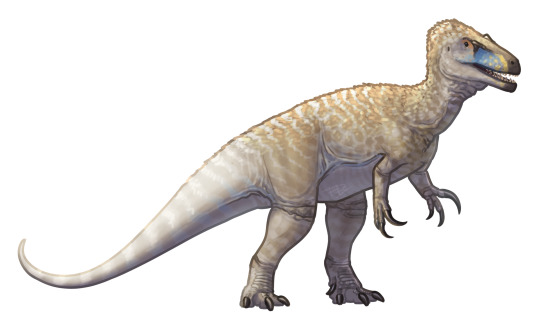
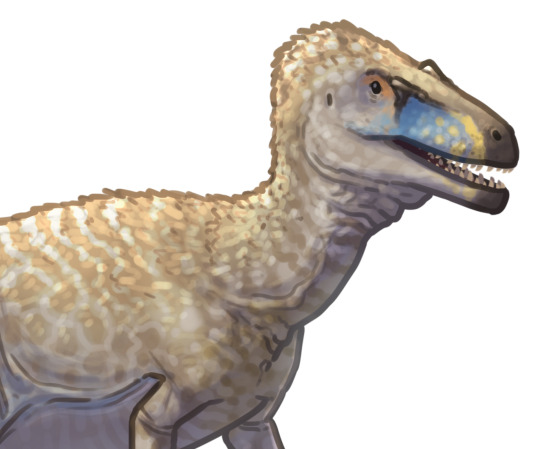

Happy 200th birthday to Megalosaurus bucklandii!!!
On the 20th of February, 1824, English palaeontologist William Buckland announced a discovery at a meeting of the Geological Society of London. The fossil jawbone, several vertebrae, pelvis and limb elements he presented that day belonged to a creature unlike anything seen before: a gigantic, land-living carnivore to which he gave the name Megalosaurus, the "Great Reptile".
This announcement, including an official published description of the fossil remains, was the first of three named species that in 1842 would be collected together by Richard Owen into the group Dinosauria. This makes Megalosaurus, revealed to the world on this day 200 years ago, the first Mesozoic dinosaur to be scientifically named!
Over the years Megalosaurus has been through some ups and downs, from being the most famous dinosaurian predator to being a wastebasket taxon that basically every scrappy theropod fossil was assigned to, to slightly fading into obscurity as more spectacular finds take the spotlight. But through it all the legacy it holds as the dinosaur that kicked off this whole wild 200 year train will always be unique.
So congrats to Megalosaurus on 200 years of being a truly Great Reptile!
669 notes
·
View notes
Text
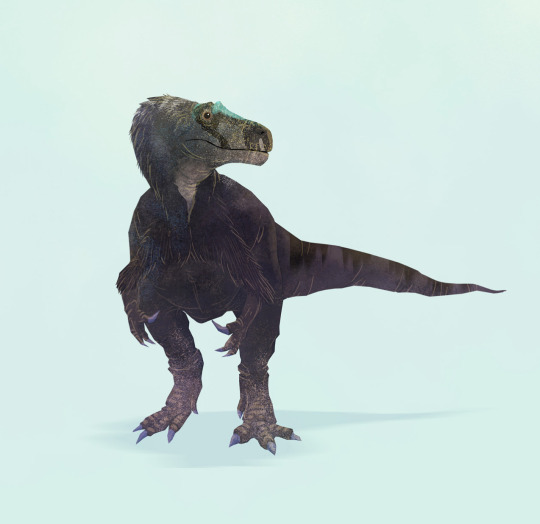
Happy anniversary Megalosaurus bucklandii! Two hundred years ago it became the first dinosaur to be named 🥳🦖🎉🍾
#dinosaur#illustration#paleoart#paleontology#paleoillustration#paleoblr#palaeoblr#art#palaeontology#megalosaurus#jurassic world#jurassic period#theropod#dinosauria#200 years
974 notes
·
View notes
Text
Cool Zoology Stories of 2024
Happy new year! As we head into 2025, here's a few fun zoology highlights from the last year.

The Iberian Lynx is no longer endgangered
Species Concerned: Iberian Lynx (Lynx pardinus)
Source: Here
Image Source: Here
The International Union for the Conservation of Nature (IUCN) is the organisation responsible for compiling information on the size and trends seen in species’ wild populations and assigning them a “conservation status” based on how threatened they are determine to be. There are three increasingly concerning categories a species may be sorted into (vulnerable, endangered or critically endangered, in that order,) and while species may be classified as increasingly threatened if their populations continue to decline they can also be raised to a less threatened category should their population increase. In the summer of 2024, the IUCN made an exciting announcement; based on an assessment carried out throughout 2023 the Iberian Lynx (the most threatened of the four lynx species, and among the world’s rarest wildcats) had done just that, being upgraded to vulnerable from endangered!
Easily distinguished from other lynxes by it’s the distinctive pair of “beard-like” fur tufts on its chin, the Iberian Lynx, as its name suggests, is found only in the southern Iberian Peninsula which stretches across Spain and Portugal. Its already small range has shrunk further due to rapid declines in its primary prey, the European Rabbit (Oryctolagus cuniculus), further aggravated by habitat loss, disease outbreaks, conflict with humans and the addition genetic pressures that species with small populations experience. By 2001 the species’ population had declined to as few 62 adults, but since then intensive efforts to increase the populations of European Rabbits, protect remaining Iberian Lynx populations, introduce captive-bred individuals and encourage land owners to reduce impacts on any lynx populations on their land has allowed for a steady increase – as of 2023 the population was believed to have risen to 648 adults, and members of this species have returned to long-vacant regions of their former range! While the Iberian Lynx remains threatened and continued efforts are needed to maintain these increases, the species’ new conservation status shows that these efforts are working, and that there may yet be hope for this beardy big cat’s future.

Big News on Baby Sharks!
Species Concerned: Great White Shark (Carcharodon carcharias)
Source: Here
Image Source: Here
Despite its large size, near-cosmopolitan distribution and status as easily one of the most famous and recognisable fish on earth, there’s a lot we don’t know about the Great White Shark. In particular, there are some major gaps in our understandings of the mating habits of adult Great Whites, and in the early development of their pups. This year, however, progress was made in filling some of these gaps; in April an article published in the journal Frontiers in Marine Science described activity within a “creche” of young (1-6 year old) Great Whites off the coast of California, demonstrating that (among other things) they moved between deeper and shallower coastal waters throughout the day and seemed to carefully position themselves within the water column in order to maintain a healthy body temperature and thereby facilitate growth and development (unlike many fish adult Great White Sharks are able to regulate their body temperature through metabolic activity much like mammals can, but it seems that younger individuals have a reduced ability to do so and are more reliant on environmental conditions to regulate their body temperatures. This is particularly exciting as an article published this January to another journal, Environmental Biology of Fishes critically examined footage recorded by wildlife photographer TheMalibuaArtist of a small, round-featured Great White Shark off also found near California’s coast that had an odd, pale film attached to its skin and concluded that (while it is possible that the film is the result of some previously undocumented disease or mutation) it may represent the first ever video footage of a newborn Great White Shark, with the film being debris that attached to the potential pup during live birth. The Great White Shark, despite its dreaded reputation, is itself classified as vulnerable by the IUCN, so gaining greater understanding of how members of these species live in their earliest years may prove invaluable in protecting wider populations!

The 200th Anniversary of the First Dinosaur Getting Named
Species Concerned: Megalosaurus (Megalosaurus bucklandii)
Source: Here
Image Source (excluding some...minor additions): Here
On February 20th 1824 the geologist and palaeontologist William Buckland became the first person to give a formal scientific name to a (non-avian) dinosaur, describing a set 160 million year old reptile-like bones found in Oxfordshire, England as “Megalosaurus”, which can be translated literally to “big lizard” (though is more often translated as the more dignified-sounding “great lizard.”) This means that this February marked the 200th anniversary of Megalosaurus getting its name and, in some ways, the beginning humanity’s long-standing love of and obsession with dinosaurs.
Based on the incomplete remains that had been discovered Buckland originally imagined Megalosaurus as being an enormous, slow-moving, lizard-like animal (kind of like an iguana crossed with an elephant.) However, further studies into the fossils of Megalosaurus and of numerous anatomically similar and therefore likely related animals have since demonstrated that it was a large, likely relatively fast-moving carnivorous biped, and a relative of modern birds (which, like Megalosaurus, are therapods.) Megalosaurus lived in what is now northern Europe throughout the mid-Jurassic period, while its closest relatives, the Megalosaurids, could also be found across Africa, Asia and North America and survived until the very end of the Jurassic. 17 years after Megalosaurus got its name it, alongside the early cretaceous ankylosaur Hylaeosaurus and the iconic spiky-thumbed ornithopod Iguanadon (all still imagined to be iguana-like at the time) would be recognised as relatives of one another based on similar anatomical features, becoming the first three genera to be classified as part of the clade that today contains all dinosaurs, the Dinosauria.

The Golden-Crested Helmetshrike was Photographed for the First Time
Species Concerned: Golden-Crested Helmetshrike (Prionops alberti)
Source: Here
Image Source: Here
Between December 2023 and January 2024 a collaborative team of researchers from the Democratic Republic of Congo and the USA set out to document the wildlife living in the Itombwe mountain region of South Kivu, DOC. Records of the species present in an around Itombwe are limited and every observation made during the trip was valuable, but perhaps the most exciting was the several sightings of the Yellow-Crested Helmetshrike, marking the first time this species has been formerly recorded in nearly 20 years and allowing for it to be photographed for the first time ever!
While several potential sightings have been reported elsewhere in central Africa, the Golden-Crested Helmetshrike is believed to be endemic to the DOC, making its home mainly in humid forests at high altitudes. Immediately distinguished from other birds in their range by the titular crests of bright yellow feathers that runs across their heads, members of this species live in small flocks and are extremely agile in flight, using their agility to hunt airborne insects. A lack of internationally available documented sightings of this species since the early 2000s had led to fears of its potential extinction, but as at least 18 individuals were sighted during the team’s expedition the species is now known not only to be surviving, but potentially to be more abundant within its home range than previously thought!

Frogs and Wolves got in on Pollination
Species Concerned: Izecksohn's Brazilian Tree Frog (Xenohyla truncata) and Ethiopian Wolf (Canis simensis)
Sources: Here and Here
Image Sources: Here and Here
Insects are by far the most important pollinators on earth (with some 80% of plants relying on insect-based pollination to reproduce,) but there are also many important vertebrate pollinators (most notably nectar-drinking bats and birds.) Pollinating vertebrates are important not only to wild plants but also to crops, wit mangos, durians and bananas all relying heavily on vertebrates to spread their pollen. 2024 saw two surprising new additions to the list of potential vertebrate pollinators; the unusual Izecksohn's Brazilian Tree Frog and the endangered Ethiopian Wolf!
Found only in Rio de Janiero, Brazil, Izecksohn's Brazilian Tree Frog is unusual among frogs in that while almost all frogs are carnivorous members of this species prominently feed on fruit and nectar. Like other nectar-feeding animals, as they move between flowers they carry pollen with them, making them the only known amphibian pollinators. The Ethiopian Wolf, native to high-altitude regions of Ethiopia, is among the rarest wild dogs on earth and has typically been thought of as a strict carnivore. In November of 2024, however, members of this species were recorded feeding on the flowers of the Red Hot Poker Plant (Kniphofia foliosa), transferring pollen on their muzzles in the process. While further studies are needed to determine quite how important either species is in pollination, it still suggests that the number of pollinating vertebrate species in the world may be greater than previously thought!
--------------------------
Have a great new year!
#Happy New Year!#zoology#biology#animal#animals#mammalogy#marine biology#ornithology#paleontology#wildlife#iberian lynx#great white shark#megalosaurus#golden-crested helmetshrike#ethiopian wolf
143 notes
·
View notes
Text


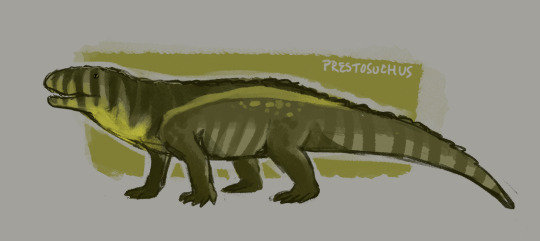

birthday baby and his friends :)
#my art#paleostream#dinosaurs#elephant#megalosaurus#plotosaurus#prestosuchus#stegotetrabelodon#did some quick fixes on the elephant afterwards- elephants are wack
444 notes
·
View notes
Text




My 25 years of palaeoart chronology...
In 2012 I built an immersive Jurassic exhibition for Scarborough's Rotunda Museum. My centrepiece was a life-size juvenile Megalosaurus; here's how I built it (Part 2 of 8 ).
#Art#Painting#PaleoArt#PalaeoArt#SciArt#SciComm#DigitalArt#Illustration#Dinosaurs#Birds#Reptiles#Palaeontology#Paleontology#JurassicWorld#Megalosaurus
188 notes
·
View notes
Photo

Retro Megalosaurus
I am not immune to Crystal Palace Dinosaurs.
Posted using PostyBirb
90 notes
·
View notes
Text
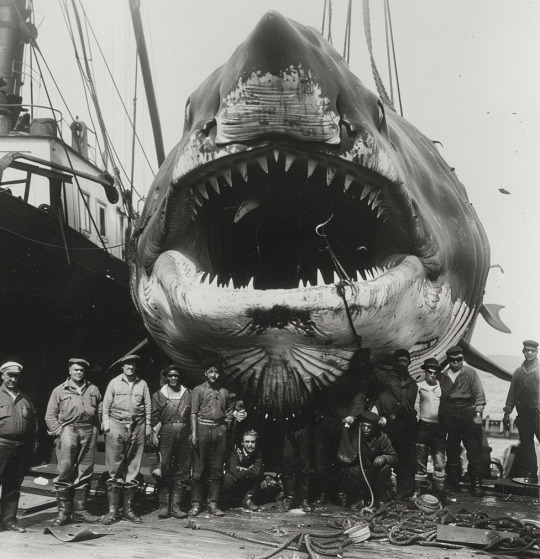
Early 20th century photo of a huge megalodon caught by fishermen in the South Pacific
245 notes
·
View notes
Text
Results = accurate 💯 We want to hear what everyone gets! 🤯🍬🎄
#paleo pines#paleo pines meme#which dino are you#screenshot game#tag urself i'm def a megalosaurus i'm so sorry
83 notes
·
View notes
Text
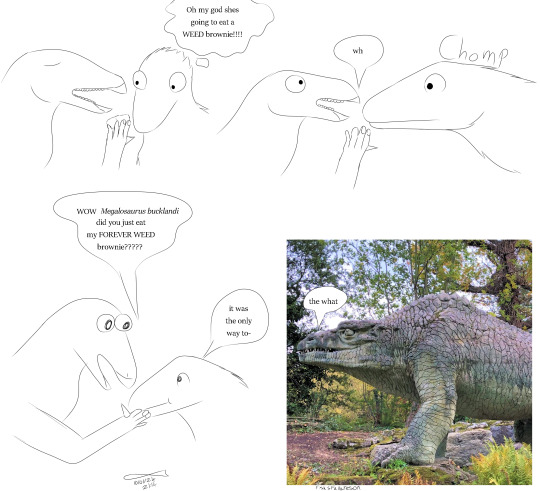
yeah
#art#my art#digital art#paleoart#paleontology#palaeoblr#dinosaurs#megalosaurus#iguanodon#coproliteposting#weed tw
576 notes
·
View notes
Text

His name is Big Gunch
#artists on tumblr#digital art#digital illustration#dinosaurs#krita#paleoart#paleontology#dinosaur#he's actually a megalosaurus
347 notes
·
View notes
Text

Amber isle really have so many cute characters and it makes me want to draw them! So here is a colored sketch of Adi the Megalosaurus! :)
128 notes
·
View notes
Text

Patreon Rewards for November 2024!
#dinosaur#dinobot#beast wars#predacons#maximals#transformers#ark survival evolved#ankylosaurus#megalosaurus#illustration#art#artwork#cartoon#digitalart#drawing#creaturedesign#procreate#artists on tumblr
129 notes
·
View notes
Text
Women's History Month 2024 - Mary Buckland and Megalosaurus

It's International Women's Day! Featuring Mary Buckland, the OG Paleoartist, AKA the lady who drew the iconic Megalosaurus jaw described by her husband William in 1824!
Coincidentally, Megalosaurus' first scientific description turned 200 years old earlier this year!
#my art#women's history month#megalosaurus#paleoart#mary buckland#international women's day 2024#dinosaurs#paleontology#nazrigart
227 notes
·
View notes